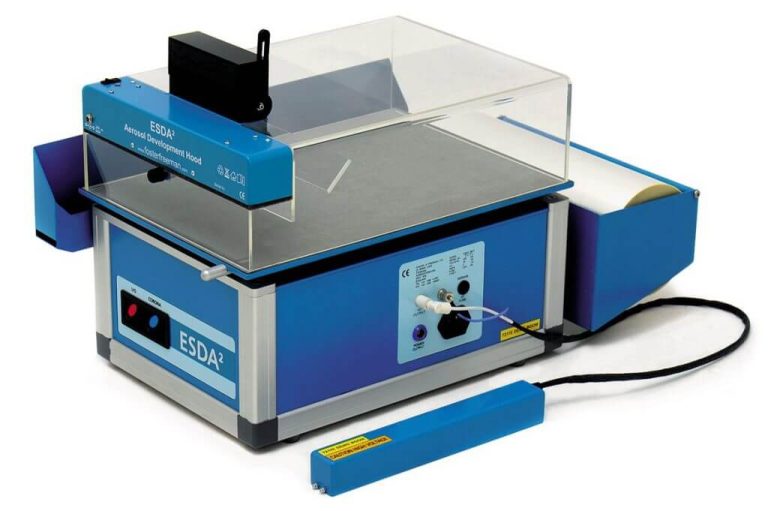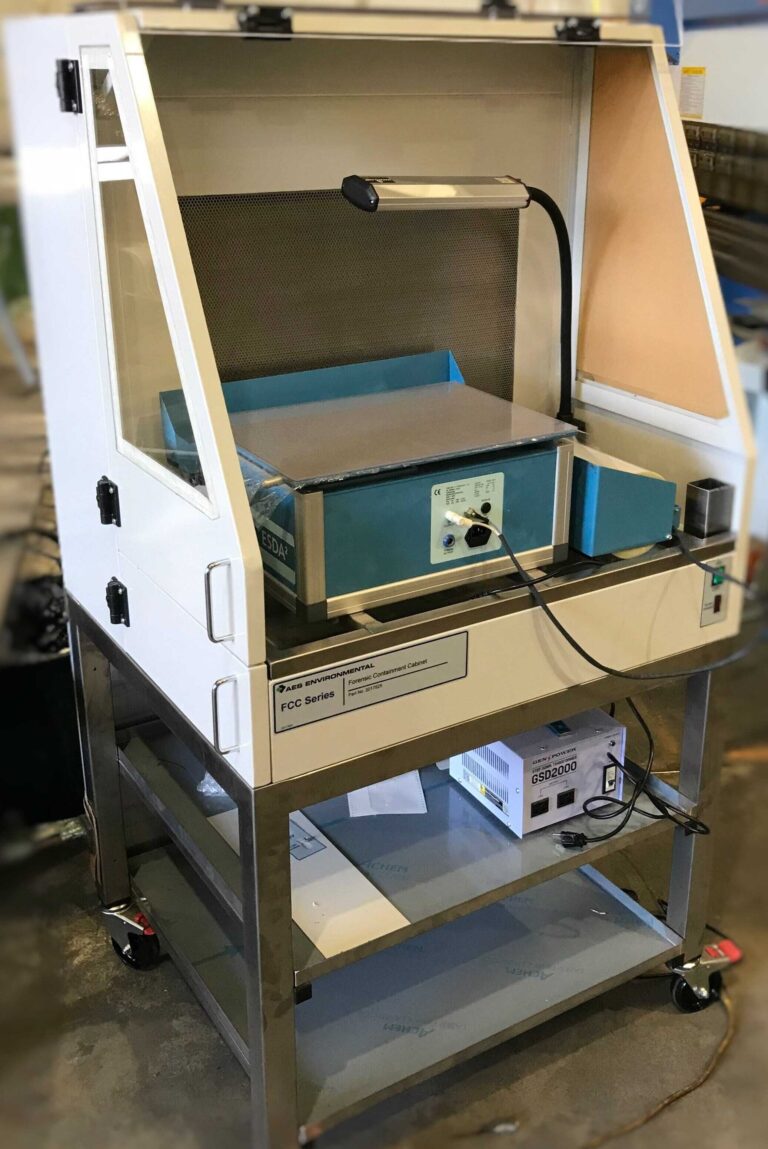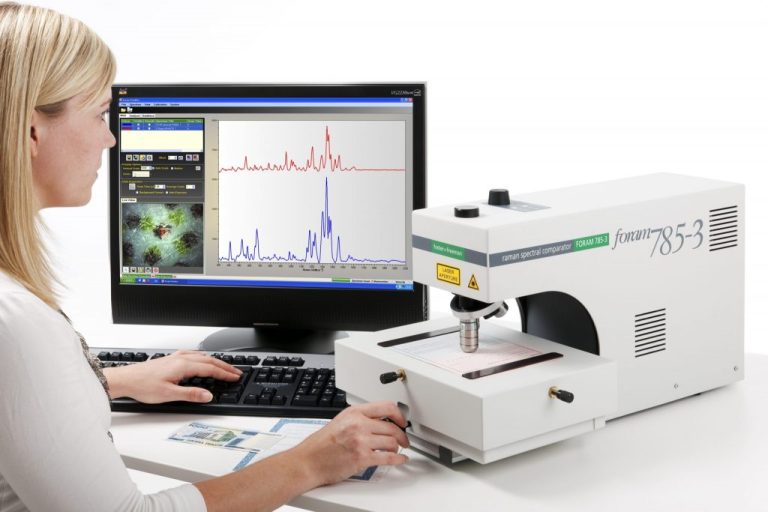ESDA 2
The industry-standard electrostatic imaging system for detecting indented writing. Foster+Freeman’s ESDA works by creating an electrostatic image of indented writing, which is then visualised by the application of charge-sensitive toners. The sensitive imaging process reacts to sites of microscopic damage to fibres at the surface of a document, which have been created by abrasive interaction with overlying surfaces during the act of handwriting. ESDA is the ideal forensic tool. As well as being simple to operate, it produces positive, life-size transparencies of indented writing without damage or contamination to original documents and without interference to other forensic tests, and documents may be processed repeatedly without loss of sensitivity.
Forensic Containment Cabinet (FCC)
The Forensic Containment Cabinet [FCC] Series is a purpose-built extraction unit designed for use with the Foster + Freeman ESDA unit. With a range of unique features, the FCC is an essential tool for safe and efficient use of the ESDA. Features include:
- Filter Extraction System for ‘Powder Cloud’
- Flexible Illumination Lamp
- Cascade Bead Tray
- Corona Wand Holder
For more information, click on the brochure PDF below:
FCC Brochure
Foram 3
Foster+Freeman’s 785 nm Raman Spectrometer for Forensic Applications is fast, non-destructive and highly effective and is an ideal technique for identifying and comparing substances of forensic value. Unlike other Raman systems, the Foram 3 has been developed specifically for forensic examinations and includes dedicated casework management software providing automatic spectral comparisons and data archiving with search and match facilities. The Foram 3 can be further enhanced through the addition of a comprehensive library of forensic Raman spectra for the identification of unknowns.



